Cool Sony TOUGH SD Card Torture Test from Cameta Camera
Sony made a good job on those!!!
The world’s toughest SD cards are 10% off at Amazon, Adorama, FocusCamera and BHphoto.
Sony made a good job on those!!!
The world’s toughest SD cards are 10% off at Amazon, Adorama, FocusCamera and BHphoto.
Last month Sony announced the new ‘Real-time tracking’ autofocus system. It’s first implemented in the new A6400 but coming soon via firmware upgrade on the A9 too. (UPDATE: A7rIII and A7III will get real-time AF update not “real time tracking as I previously stated incorrectly). At first look this might not be news that grabs big headlines. But if you digg into the new AF system you start to realize this is quite a big thing!
Dpreview tested the new tracking modus and writes:
What makes the new system better? Real-time tracking now uses additional information to track your subject – so much information, in fact, that it feels as if the autofocus system really understands who or what your subject is, making it arguably the ‘stickiest’ system we’ve seen to date.
What does all of this mean for the photographer? Most importantly, it means you have an autofocus system that works reliably in almost any situation. Reframe your composition to place your AF point over your subject, half-press the shutter, and real-time tracking will collect pattern, color, brightness, distance, face and eye information about your subject so comprehensively it can use all that to keep track of your subject in real-time. This means you can focus on the composition and the moment. There is no longer a need to focus (pun intended) on keeping your AF point over your subject, which for years has constrained composition and made it difficult to maintain focus on erratic subjects.
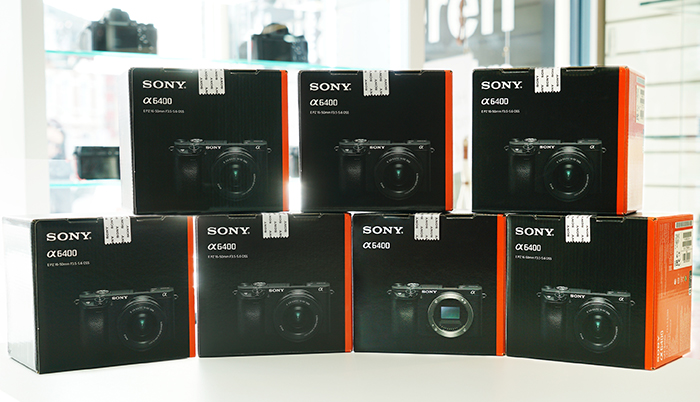
The German store Ringfoto-dockhorn.de got his first Stock of A6400 cameras that will shipped out soon. And Kinotika posted this new Sony a6400 VS Canon M50 comparison:
And here is Marc Galers full review:
Sony A6400 preorders:
USA at BHphoto, Adorama, FocusCamera, Buydig, Amazon.
Europe at Calumet Germany, ParkCameras UK, Jessops.
Asia at Sony Australia and Sony Japan.
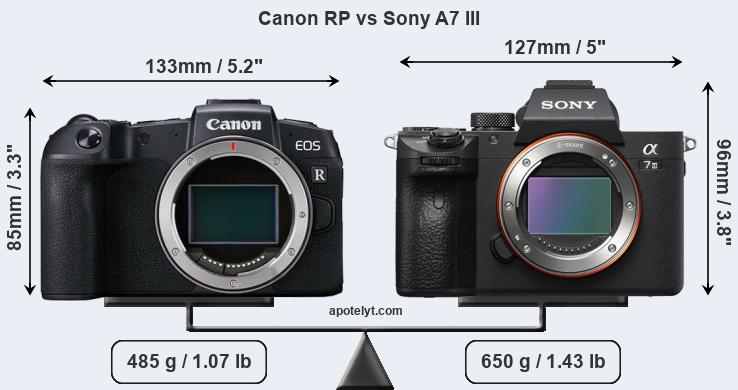
Apotelyt.com made this accurate size comparison betwene the soon to be announced new Canon EOS-RP ($1599) and the Sony A7III
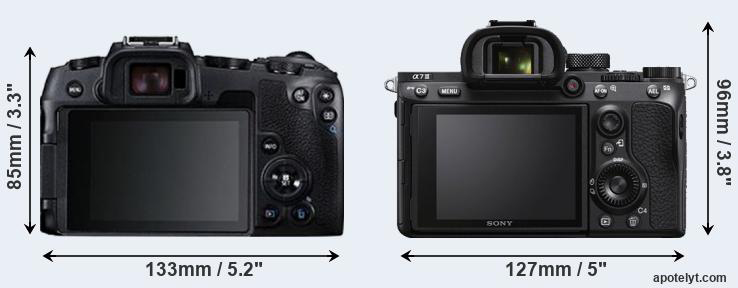

Those are the specs (corrected by me as there was an error made by Apotelyt)
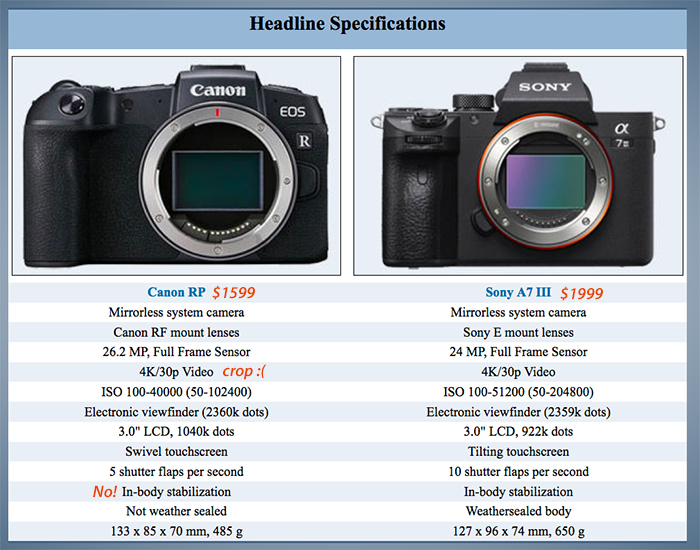
I think Sony can easily counteract with this camera launch by dropping the price of the Sony A7III (which is still the much better camera). What I really found worrying is that FF is getting so cheap that classic APS-C (Fuji) and MFT (Olympus) camera makers could suffer from this…
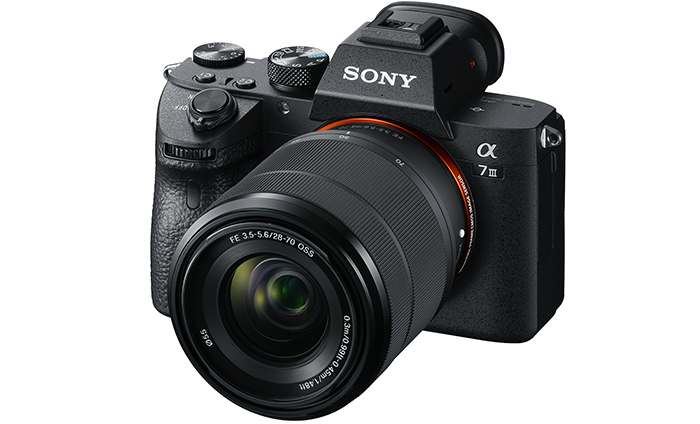
Photographylife conclusion is:
The last few years have seen Sony release some great full-frame mirrorless camera models but the A7 III might just be the best yet. It doesn’t have the highest resolution, fastest focusing and shooting speeds or the best video quality, but by borrowing some of the best features from the A9 and A7R III, it is consistently excellent in almost every facet. With its powerful 24 MP sensor, compact dimensions, much-improved handling and customization, amazingly quick and accurate autofocus system, large battery capacity, native 4K video recording, and great sub-$2K price, the A7 III is the most well-rounded mirrorless camera on the market today and receives our highest recommendation.
And here are new A7III videos by TheCameraProject and Manny Ortiz:
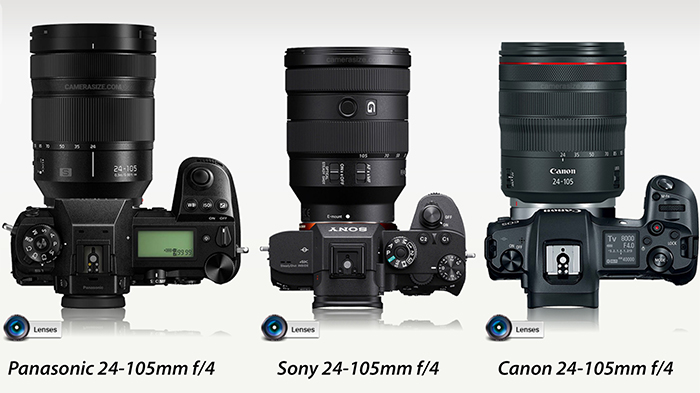
Panasonic is the ultimate killer of the myth saying that Mirrorless is smaller than DSLR :)
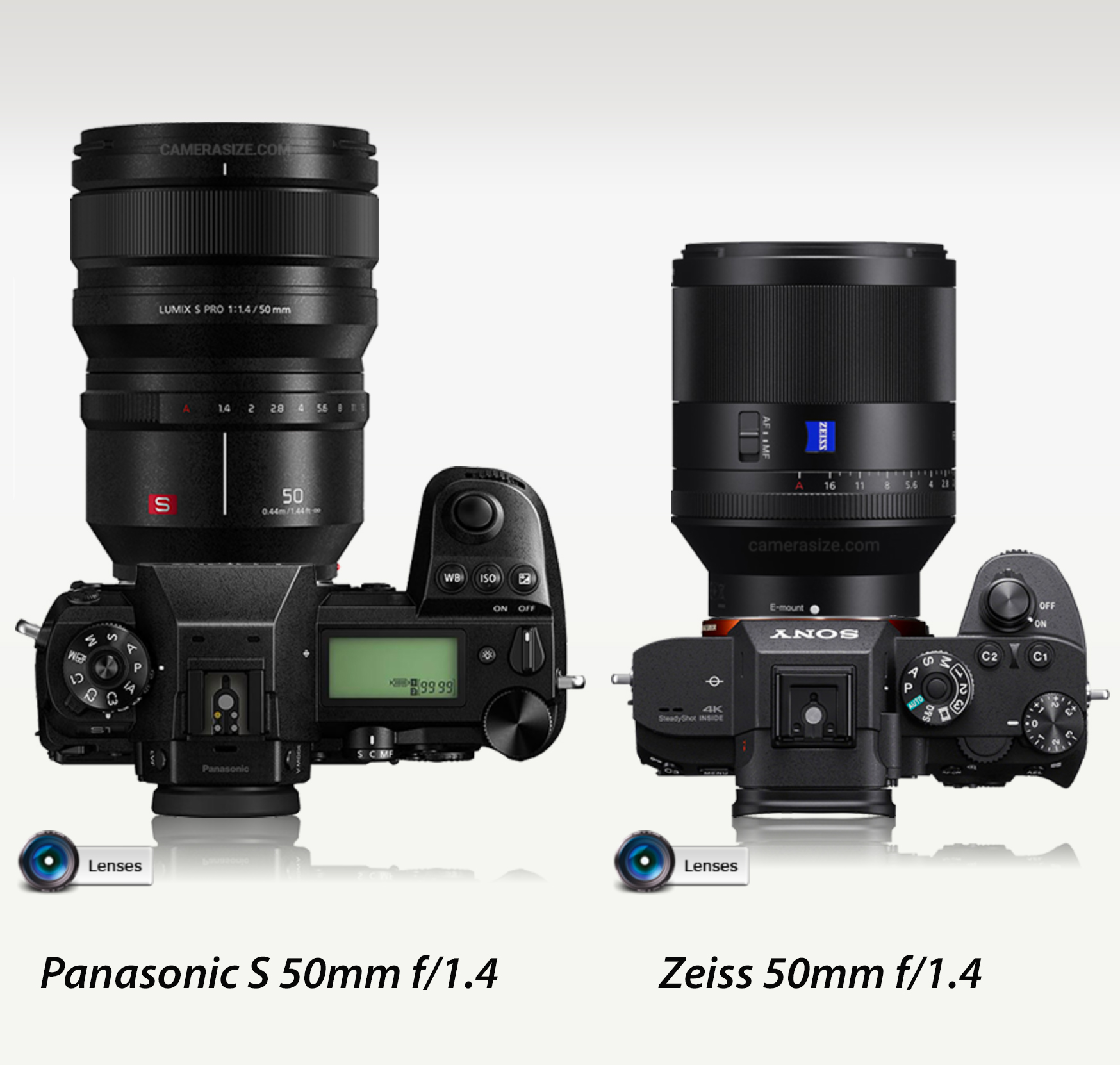
Courtesy fo CameraSize.
On top you can watch Max Yuryev take on the new Sony A6400. Below the new Matt Granger test:
Cinem5D also tested the camera and concluded:
Manufacturers often test new features in their professional lines first and then let them crawl down into their consumer/prosumer line – and it seems like this is what they did again on the A9, which is considered to have one of the fastest autofocus systems in the industry. (We haven’t tested Sony’s top-of-the-line A9 mirrorless camera simply because it’s not focused on video shooting at all – it lacks all Slog options.) So while the a6400 could have been that ordinary camera which resembles the a6300 and a6500, that autofocus killer feature alone is worth the extra look, especially as this is a glimpse to the future of all other cameras too!
And here we have a new Q&A from Gary Fong:
Sony A6400 preorders:
USA at BHphoto, Adorama, FocusCamera, Buydig, Amazon.
Europe at Calumet Germany, ParkCameras UK, Jessops.
Asia at Sony Australia and Sony Japan.